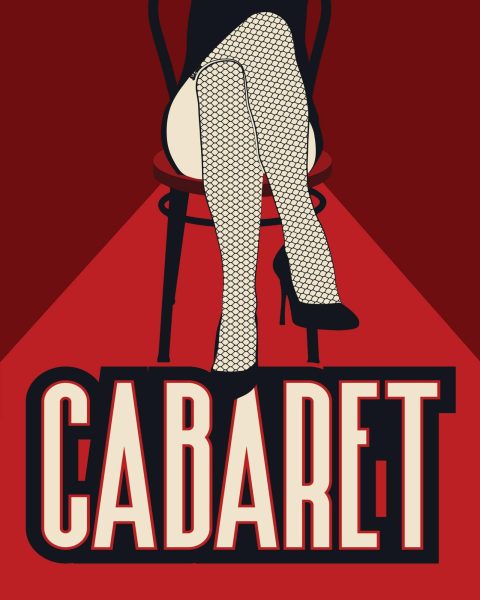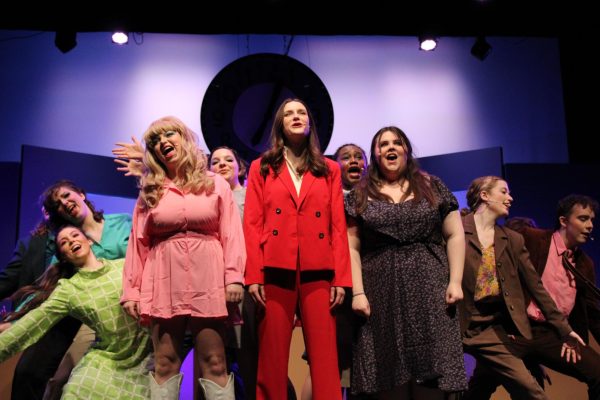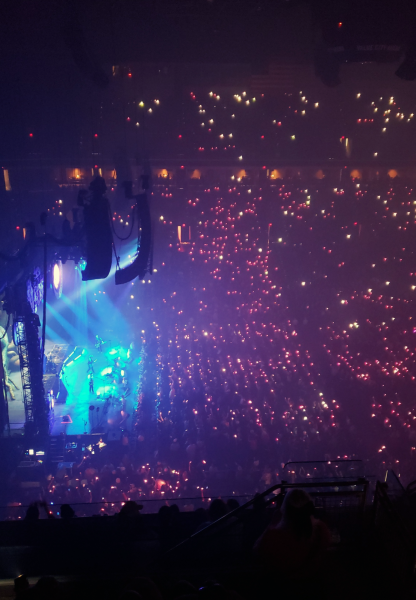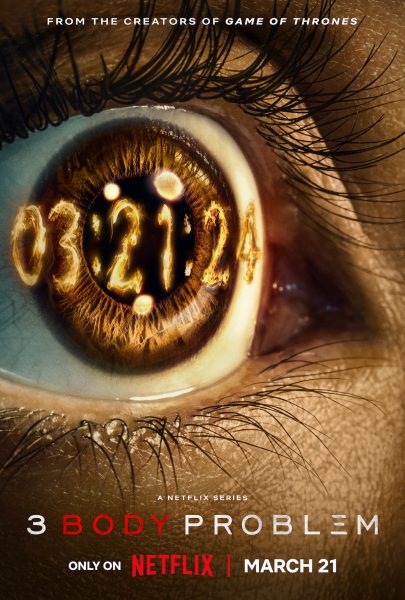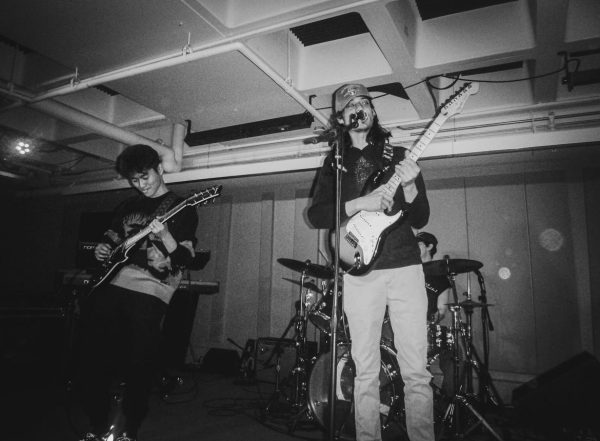These are not still waters
November 8, 2013
Eleven women in black dresses are on the stage. Slowly, carefully, they help one another up onto the line of chairs that flow across the stage. The dancers walk, crawl and stretch in languid, yet carefully controlled, movement of limbs and bodies. A chair tips. A dancer begins to step onto the overturned chair and it trembles and wobbles unbalanced. Her weight shifts forward precariously. The chair begins to lift from its side and tip at a dangerous angle before she can reach the next chair.
“Inundation” is the fourth section of Shannon Sterne’s same-titled piece. The modern dance premiered as part of “Au Courant” at the Mather Dance Center on the CWRU campus, Nov. 1, 2013. Campus and community members will have another chance to experience this powerful display of emotion and movement on Nov. 8 and 9 at 8 p.m.
In 1924, the river Seine in Paris, France flooded its banks. The black and white photograph by Henri Manuel of people traversing a line of chairs to avoid the rising flood waters was the original inspiration for Sterne’s piece. But in dance, as in life, things are rarely static.
“It changed a lot, from the original idea, which was inspired by this photograph.” Sterne said. “As I began to work on it, it began to come together as a narrative.”
“Inundation” opens with a moving melodrama that anyone who has been in a relationship, or has loved someone who doesn’t quite love them back, can relate to. The dance begins flirtatiously. It’s provocative at times. Yet, it has depths which are explored as the dancers move through its five parts to the ultimate conclusion.
Sterne advises that it isn’t really about a relationship.
“The failing relationship is really framing what is happening and what the dance is about. But the dance is really about the different stages of being overwhelmed and the different facets of that change,” Sterne explained.
The emotions that Sterne and Ryan Andrew Dick bring to the table as the lead dancers of the piece are crystal clear.
“[The duets] are very theatrical, and there were demands on us as actors as well as dancers. Which is part of the reason why I brought in Ryan, who I danced with at Dancing Wheels. He is more seasoned, with a lot of professional experience to be able to pull off the emotional qualities,” said Sterne. “Next weekend Richard [Oaxaca] is going to be performing it. Richard has a lot of performance experience. I think he’s going to do really well with it. But his background is very different than Ryan’s, and his body type is very different than Ryan’s, and his movement style is very different, so it’s going to be a whole ‘nother [sic] piece next week.”
“Inundation” isn’t Sterne’s first performance, either, or her first choreographed piece. Sterne received her Masters degree in contemporary dance and nutrition, both from CWRU. She’s performed internationally with the San Diego Ballet, nationally with the Dancing Wheels Company and danced throughout southern California and Ohio as a freelance artist. Her experiences have brought her back to CWRU and she’s been an assistant professor in the Department of Dance as of 2013. She teaches ballet, modern dance, kinesiology and dance history. But for her choreography, she’s been drawn to the freedom of modern dance.
“There is more acceptance of a broader range of movement styles and body types. And the emphasis is not always on trying to look like someone else.” Sterne said. “And the reality is, a lot of people can’t and never will achieve that ‘ideal,’ but are beautiful dancers with a lot to contribute artistically, nonetheless—and modern dance is that venue.”
Sterne was able to craft particular pieces of the dance, especially “Agitation,” to the specific strengths and abilities of her dancers. During “Agitation,” the inner turmoil of Sterne and Dick are represented by 11 different dancers. Except for Sterne and two guest artists, the dancers are all graduate students, with either majors or minors in dance.
With so many dancers, Sterne was challenged to create essentially 11 different solos. Sterne pulled together the timing and complexity of the dance in only eight weeks from auditions to the first show. It wasn’t easy.
“What was very challenging was that, in the two group sections, every movement is dependent on what happened before it. With all the manipulation of the chairs being moved around in space, everything was very precise.” said Sterne. “We always had to go through it from the top every single time, because things needed to be moved into the right places at precisely the right times.”
It was a complicated process. It also meant that if one person was missing from rehearsal, there was a major obstacle. If each dancer was on stage and needed to move props while simultaneously responding to the moving of those props, what could be done?
“The dancers got really smart about saying ‘Okay, so and so’s not here and she needs to move that chair to that space.’ And then they’d kind of fill in and get the chairs into the right places, even if the person, the body, wasn’t there,” said Sterne.
It could have all been too overwhelming. But not for Sterne. For her, it’s all about the creation and the performance. It’s about watching a dance, and the dancers, grow and evolve; watching everything change into something new.
Change isn’t a new theme for Sterne. For her, dance itself is about change and about experience. It’s a relationship.
“When you view live dance, you’re experiencing something that is being created and is unfolding right in front of you,” said Sterne. “It’s very different than seeing it pre-recorded or reading it in a book. It’s a shared experience between the audience and performers.”
Live dance is unpredictable. It’s impossible to know what will happen, and, if something unexpected does occur, it’s difficult to predict how the performers (and the audience) will cope.
The chair continues to teeter, while the dancer shifts her weight. The audience holds its breath, waiting for the inevitable fall. Another dancer reaches out. They grasp forearms. The dancers provide support for one another as they navigate the maze of chairs, upright and fallen. They could be friends, sisters, lovers or different pieces of the same mind, all coming together from the tumult of overwhelming experience, navigating the floodwaters of emotion. Passing through. And perhaps, just perhaps, they find, if not love, then acceptance and surrender on the other side.
“Inundation” is one of many pieces in “Au Courant,” which presents a menu of what the Modern Dance program at CWRU offers. While “Inundation” showcases the narrative skills of Sterne and stretches the dancers physically and theatrically, other dances offer different experiences. Karen Potter’s “Veiled Tears” is reminiscent of the Greek tragedy, complete with a chorus. “Remote Encounters” is Gary Galbraith’s psychedelic digital dance, which the techno savvy will appreciate. Finally, Mark Morris’ “Canonic 3/4 Studies,” which leaves the audience laughing at times, is significantly more puckish and playful than the name implies.
For those interested in experiencing the performances in “Au Courant,” general admission tickets are available to the public. The final performances are Nov. 8 and 9 at 8 p.m. Tickets are $5 for CWRU students and $7 for the public and the CWRU community.
More information about CWRU’s dance program can be found at dance.case.edu.

















